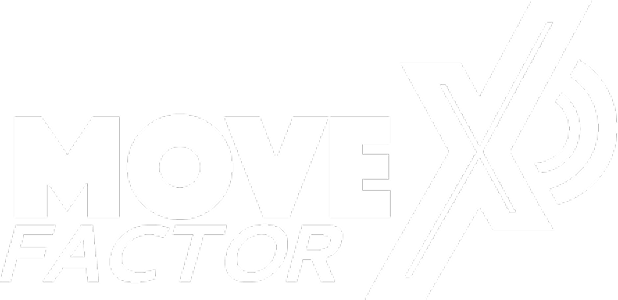-
Movement Health
-
Clinical
-
High Performance
-
Resources
-
Shop
-
Contact Us
November 03, 2021
The concept of velocity-based training (VBT) isn’t new but recent innovations have made it more accessible and effective than ever, skyrocketing its popularity in the past few years. Thanks to a lot of fresh education around the tracking and reporting value, more coaches, trainers, and physical therapists are incorporating VBT into training plans to help athletes and clients improve their strength, speed, and power. This short article provides a basic overview an entry point to understand how velocity-based training may improve the output of your program.
One of the biggest advancements in the space today simply is cost, the new breed of affordable hardware technology has opened the door to all budgets. No longer is velocity based training sport tech only an option to pro sport or the big D1 programs. Today, teams and athletes are not limited to the $2,000 plus per station products that are bulky to manage and include the old string-based encoder technology. The big win for the sport tech consumer are the fresh options under $500 which are incredibly portable, have no mechanical parts to be maintained, and have evolved into very accurate tools.
Given the variety of velocity-based training devices on the market, it’s important to have a solid understanding of this training approach to ensure you make the right investment. Let’s take a closer look at velocity-based training and why it’s gaining acclaim in the sports science and human performance industry.
Velocity-based training is a modern technique coined by Dr. Byran Mann for strength and power training that leverages velocity tracking technology to provide instantaneous data for the trainer. In essence, VBT evaluates and quantifies the output of a given movement, down to the rep and phases of that rep! With this rich data, the coach can encourage and support real-time adjustments in a client’s training session, along with monitoring over time. The story no longer is about a 1 rep max; rather, now it’s about creating power and explosiveness at sub maximal loads with the goal of positive transfer to the field or sporting task.
Just a few of the exercises that the velocity based strength training device can be used during barbell tracking include:
There are various types of Velocity-based training sensor technology — such as linear position transducers, laser optic devices, and wearable IMU/accelerometers — to measure movement velocity during an exercise. The VBT device provides the coach and athlete with information about the exercise performance, which the coach uses to give the athlete highly specific feedback.
Before velocity-based training innovations entered the market, the ‘one-repetition maximum’ (1RM) method was the most widely used to prescribe exercise intensity and monitor change. The 1RM method uses the maximum amount of weight that a person can possibly lift for one repetition. VBT is steadily replacing 1RM since it’s better by monitoring and planning strenth training programs at various intensities, especially the lower to mid-range loads to maximize velocity and where explosiveness is assessed with metrics such as our POP-100™ and rate of force development (RFD).
While the advantages of VBT are numerous, here are the top four reasons why trainers, coaches, and therapists should apply this approach to their training programs.
Velocity-based training technology offers precise tracking and a wealth of data, providing superior monitoring compared to other types of training methods like 1RM and perceived exertion. Power, force, and velocity measures along with squat depth and explosiveness/rate of force are all available metrics. Bottom line, you have objective measures to know what is going on.
Muscle performance fluctuates daily due to stressors like training fatigue, sleep quality, and daily life. With velocity-based training devices, coaches and athletes are able to use the instant feedback to autoregulate during a training session and identify proper training loads. The goal with this type of sport tech application is to attempt to optimize each session, especially for team programs who have limited training blocks due to NCAA rules.
Identify optimal velocities and specific loads throughout training to improve the specificity of training. Are you speed training? Are you power training? Are you strength training? When a particular zone is enhanced by the VBT feedback, the athlete can achieve greater results.
Receive instant feedback to improve encouragement and athletic performance. With near real-time data, coaches are able to provide specific instructions of load (intensity) and bar velocity targets to hit, which has the ability to enhance the strength training down to each repetition! The term “intent” is commonly used in coaching circles to describe this competitive and motivational loop of setting a targeted goal, focus/discipline on each rep, display of the instant output (velocity achieved), and adjustments if required. The adjustment could be adding or subtracting load, or the athlete via “intent” increasing effort (personal competitiveness) on the next rep to hit the velocity goal.
By implementing velocity-based training into your performance programming, you’ll be able to give your athlete or client the valuable information they need to perform their best. Often it can be as simply as the athlete learning what moving a barbell “fast” means and feels like. The VBT sport tech creates the environment to focus on performance and optimize training sessions.
Velocity-based training can be implemented for every level of athlete and for a wide variety of sports, such as football, soccer, basketball, lifting, hockey, golf, and more. By having near real-time data, coaches and athletes are able to monitor the velocity of key movements which, in turn, influences programming decisions to make sure the resultant of a training phase it being met. The alternative is flying blind. While there is industry debate as to the best use-cases of adding velocity-based programs, here are some ways that VBT is being used by trainers and clients to get more out of each session.
Individualize training through load velocity profiling, which is the process of identifying the velocity (or power) profile for each athlete. This insight is important as each athlete will have a unique profile, and understanding the individual profile aides as a “needs analysis” to what is required for the programming. The profile is established by sampling performance outputs at various loads. The one-size-fits-all approach of basing speed and power training zones as a percentage of one rep max has flaws because each athlete may develop power differently at various intensities. A load velocity profile eliminates the generic approach which often may become unproductive to reach the performance goals, and hones in on the needs of each athlete.
Minimal velocity thresholds (MVTs) are exercise specific and often use the average concentric velocity generated during the last successful repetition. Coaches can use MVTs to determine if an athlete is reaching a rep count in a set and stopping the set due to a minimum velocity being reaches. Or, coaches may use MVT for ballistic lifts such as a hang clean or power clean to establish a velocity cut off point to where a load becomes too high (minimum velocity not reached) for the athlete to properly complete the movement.
Augmented feedback is the use of quantitative data to give more accurate feedback and drive motivation. When a coach is able to accurately monitor an athlete’s performance, they can provide specific instructions to the athlete to help them beat previous reps.
Athletes experience fluctuations in strength and readiness due to a number of factors, like stress or poor sleep. With velocity-based training the coach can adjust the training to fit the athlete’s state and reduce the effects of fatigue. And while the thought process often defaults to reducing a load due to the above listed factors, if the athlete is crushing it on a particular day the training adjustment may be to add load to optimize that opportunity!
A coach that understands an athlete’s velocities for different exercises is better able to identify and target specific training qualities. From there, the coach can tailor the training to level up the athlete’s performance.
There’s a multitude of ways that coaches and trainers can leverage velocity-based training device technology in their athletes’ training plans. By using real-time data, coaches are able to give athletes the right motivation that elevates performance, and athletes are able to achieve greater results.
The rise of velocity-based training is in large part due to recent technological advancements that make it easier and more accurate to calculate velocity data for exercises. In addition, probably the biggest driver of growing VBT adoption is the new line of affordable sport tech options. When a coach can perform testing, collect data, and evaluate insights, they’re able to personalize each training program to maximize results while reducing the risk of fatigue and injury.
Although VBT technology is powerful, it can’t replace the fundamentals of good training and coaching. The coach will still have to watch the technical execution of exercises and provide quality feedback for the athlete to succeed. In summary, combining velocity data with training expertise not only will improve athletic performance, but also strengthen coach-athlete relationships.
Capture the movement of an exercise and receive instant barbell tracking and velocity-based training performance feedback with the MoveFactorX barbell tracker sensor module. The ultra-portable package weighs just 25 grams and uses only 8 cm of barbell real estate, making it the smallest footprint on the market.
Made in the United States, the innovative package includes the MFX sensor module, barbell sleeve, MoveFactorX app, and access to fully integrated team reporting. (Note: Bodyweight jump performance application will be released later in 2021).
Contact us today to take athlete performance monitoring and improvement to the next level!
Sources:
https://www.scienceforsport.com/velocity-based-training/ https://simplifaster.com/articles/sports-science-data-weight-room/

D.M. Medical Innovation Building
109 Michigan Street NW, Suite 421
Grand Rapids, MI 49503
United States
Sign up to get the latest on sales, new releases and more…
© 2025 MoveFactorX.
